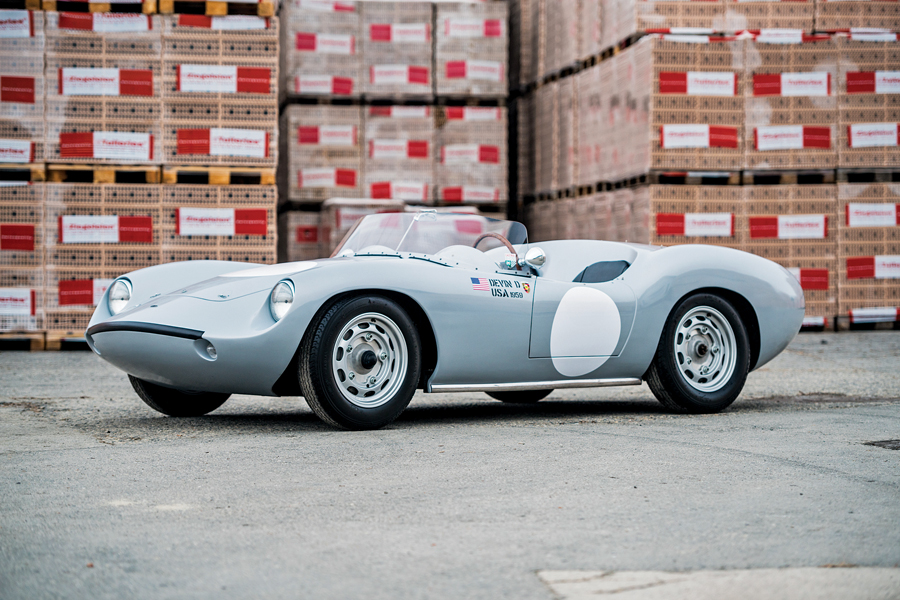Chassis Number: DD512
The brainchild of Bill Devin, an SCCA National Champion from California, Devin Enterprises created a number of kit cars in the 1950s and 1960s. Lightweight, affordable and easy to construct, Devin’s fiberglass sports car quickly earned him a stellar reputation, and Devins could be found competing on racetracks across America.
The Devin D could be purchased as a kit to be assembled by the customer or as a completed car for racing or street use. Boasting a tubular frame, the car was assembled mainly with Volkswagen parts and could be fitted with either a Porsche or VW engine. While this particular Devin D’s history remains largely unknown, documentation on file notes that this particular car was once part of the estate of Bill Devin. It was sold from the Devin Estate to an individual in Italy in 2003, before its current owner bought the car in 2014.
Fitted with a Type 616/7, 1,600-cc, 4-cylinder engine from a Porsche 356B, the car presents quite well throughout. Still popular today in vintage racing, there is no doubt that this Devin D would be an absolute thrill to drive.

